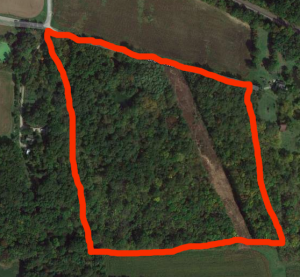The three grown children were gathered around the conference room table, joined by my Father’s attorney.
We were discussing the disposition of his estate. It was a sad, but expected meeting.
“I’ll need some guidance on disposition of the Timber Pasture” the attorney said.

The Timber Pasture has been in our family for generations. This side of the family arrived in Southern Illinois in the 1860′s. Many came from Missouri, in part to escape the bloody pro-slavery and anti-slavery turmoil, and in part to acquire better land for farming. Illinois was a free state, had rolling hills, flat farmland, and a good water supply. The family acquired farmland, and also the “Timber Pasture” of about 33 acres. Over the years, the farmland was sold off, but the Timber Pasture was kept.
The Timber Pasture hadn’t actually been used for anything for over 60 years, other than an occasional walk through. I can remember occasional visits to plink tin cans with my Grandfather’s .22 rifle. During those years, the forest took over the pasture, and the land became a large woods, filled with walnut, hickory, other hardwood trees, and a lot of brush. Continuing to call it the “Timber Pasture” is misleading, as there really isn’t any pasture left; it’s all timber.
My brother and sister and I all agreed the land should remain in the family, but none of us lived in the area. We live hundreds or thousands of miles away. We briefly considered jointly owning the property and deciding everything by consensus over the phone, but rejected that idea as unworkable.
After considering proximity, available time and other intangibles, we agreed that I would take over the Timber Pasture and I reluctantly agreed. When they asked my what I planned to do with it, I answered, “Nothing…just leave it the way it is.”
Only later did I discover that I couldn’t just leave it the way it is.
